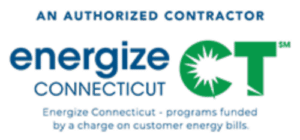You don’t spend a lot of time in your attic, but sometimes, you have to go up there. Maybe you heard a strange noise and went to check it out, or needed to bring down the holiday decorations.
You poke your head up and point your flashlight around, only to see a fuzzy white mold growing all over the insulation.
Don’t panic! Mold on your insulation isn’t a good sign, but it’s fixable.
At New England Smart Energy Group, we’ve helped plenty of homeowners in New Haven, CT, and the surrounding areas replace wet and moldy insulation. Plus, we can help income-eligible homeowners save $7,500 on mold removal to prepare for an insulation upgrade, thanks to a New Haven city grant.
Here’s what you need to know if you’re in this situation.
Is Mold on Insulation Dangerous?
Mold on your insulation isn’t something you want to ignore. It can cause problems like:
- Poor indoor air quality
- Respiratory issues, especially if someone in your home has asthma or allergies
- Musty smells throughout your house
- Damage to building materials
- Poor insulation performance, leading to energy bill spikes
What Does Mold on Insulation Look Like?
Mold on insulation can take a few different forms depending on the type of mold and how long it’s been growing. You might notice:
- White, gray, or green fuzzy patches on the surface of insulation batts or blown-in insulation
- Black or dark green spots, especially on wooden surfaces like your rafters. If there’s mold on your rafters, there’s likely mold on your insulation as well.
- Musty odors are coming from that attic
- Wet insulation that looks or feels damp
If you’re not sure what you’re seeing is mold, it’s best to get a professional assessment.
What Causes Mold Growth on Insulation?
Mold doesn’t just show up out of nowhere—it needs moisture to grow. Here are some of the most common ways insulation can get wet and become a breeding ground for mold:
- Roof or Plumbing Leaks – The most common cause of mold on insulation is a significant roof leak that lets bulk moisture into your attic.
- High Humidity – In the summer, humid air can get trapped in poorly ventilated areas like your attic.
- Ice Dams – In the winter, melting snow can refreeze at the edge of your roof and form ice dams. Water trapped behind these dams can seep under shingles and into your attic, soaking your insulation.
How to Get Rid of Mold on Insulation
We highly recommend hiring a professional to deal with mold. Income-qualified homeowners in New Haven can get financial assistance to help cover the cost, up to $7,500. New England Smart Energy Group can help you take advantage of these savings and coordinate the removal process. Reach out to us today to learn more!
Here’s what the mold removal process typically looks like:
1. Remove Contaminated Insulation
First, any insulation that’s been affected by mold needs to be carefully removed.
2. Clean & Disinfect
Next, the surrounding area should be cleaned to kill any remaining mold spores.
3. Install New Insulation
Once the area is clean and dry, we install new insulation. Thanks to Energize Connecticut℠, you may be eligible for up to 100% off insulation upgrades. If the Energize CT incentive doesn’t cover your installation costs completely, you may still be eligible for additional rebates through the New Haven City Grant to bridge the gap. Learn more about rebates and incentives.




